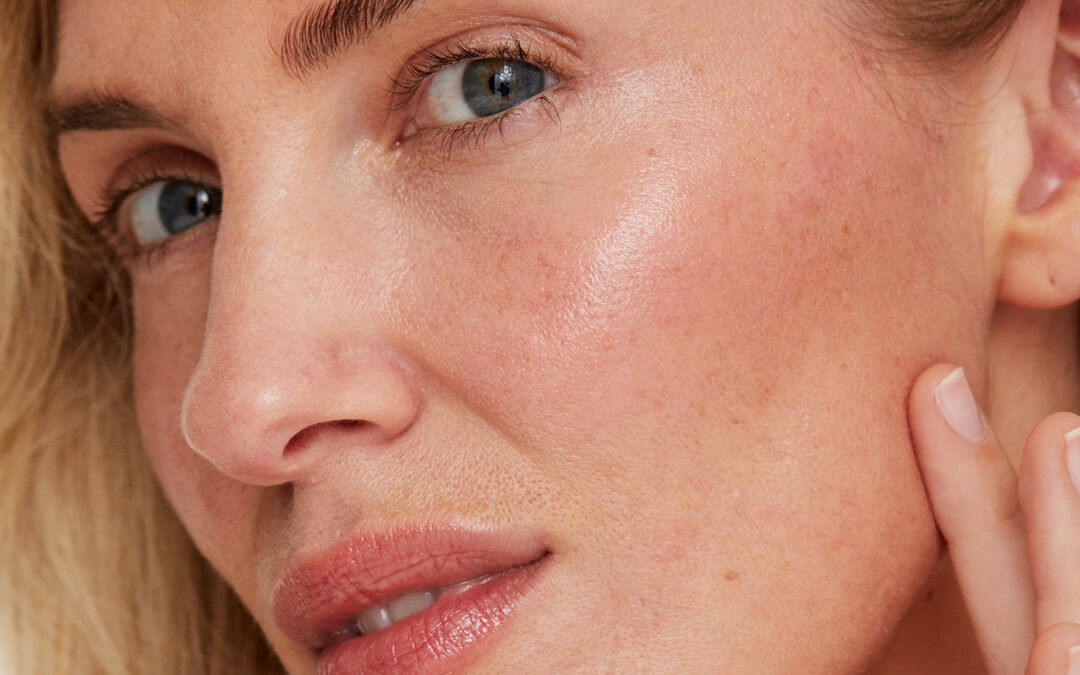Views: 0
April is Rosacea awareness month and I thought it was the perfect time to share my morning skincare routine and perhaps, just as importantly, the things I don’t do because of my skin type.
So like 10% of those of us who live in Northern Europe I have a tendency to rosacea – my skin flushes easily, with temperature, if I overly handle my skin and if, most importantly for me, I use the wrong skincare. My skin will go nuts! Similarly, in a hot room or after a glass of red wine or a hot drink, I’ll get a serious glow. I don’t tend to get blemishes – I’d class my skin as erythematotelangiectatic rosacea – but I do definitely have a few broken capillaries on my cheeks and nose.
I also want to minimise fine lines and maintain a nice plump dermis – the source of youthful skin – so that consideration needs to built into my routine too.
As a final consideration (as if that wasn’t enough!) I want to avoid clogging my pores as I’m blemish–prone. I’ve had quite bad breakouts in the past, but I get them much less now as I understand my skin better.
Now achieving all that might sound like a challenge, so let me show you how I do it.
What skincare should you use with rosacea?
Getting the basics right is so so important.
My mantra with cleansing is Do No Harm. That means I focus on a single, barrier -preserving cleanse (rather than double cleansing) and I avoid any friction, so I avoid flannels and cleansing devices. Fingertips are the ideal tool. I take my time and breath meditatively to make a calming ritual of it.

What moisturiser should I use with rosacea?
With hydration, I make sure to replace the right things with the use of barrier supporting ingredients like ceramides and free fatty acids.
Which sunscreen is better for rosacea – chemical or physical?
Mineral sunscreen means I protect my skin from UV rays without irritation and tinted SPF allows me to even out redness too. It’s also good for my sensitive eyes, so avoids the stinging often associated with chemical sunscreen.
When it comes to the basics, what’s as important is what not to do, so check out next week’s video on this.
What active ingredients are good for rosacea?
When it comes to activating my skin, I take the view that the morning is about anti-inflammatory moves. Now the range of options for this is large:
Actives for Rosacea:
- Azelaic Acid
- Niacinamide
- Microencapsulated benzoyl peroxide
- Soolantra (on prescription)
- Low dose tetracyclines (on prescription)
For me, I rely on azelaic acid, niacinamide and a little vitamin C. I find l-ascorbic acid with its low pH too aggravating for my skin at the moment so I prefer to use an ester that is more readily absorbed without the pH issue.
So once I’ve sorted my anti-inflammatory step in the AM, I’ll look at night-time to gently work on my collagen levels. Redness-prone skin benefits from an approach to maintain the dermal matrix, the skin’s deeper layers in order to minimise fine lines and wrinkles.
Can I use retinoid if I have rosacea?
A “gently, gently” approach is required. I love Granactive Retinoid or Differin on prescription. It also means adding in ingredients like bakuchiol. This has a very useful set of properties that really suit my skin, as it’s great for all 3 of my key concerns.
After cleansing at night, depending on how skin feels, I’ll probably buffer with moisturiser first.
This just saves me from any retinoid snafoos. The focus is on protecting the eye area, nasal creases, lips and neck if just starting out – these are sensitive spots which can become irritated if your retinoid collects there. I’ll then use my 13 Dot Technique for precision.
You might try a less frequent dosing strategy at the beginning, so every 3rd day. Then build up slowly to daily use, if tolerated.

